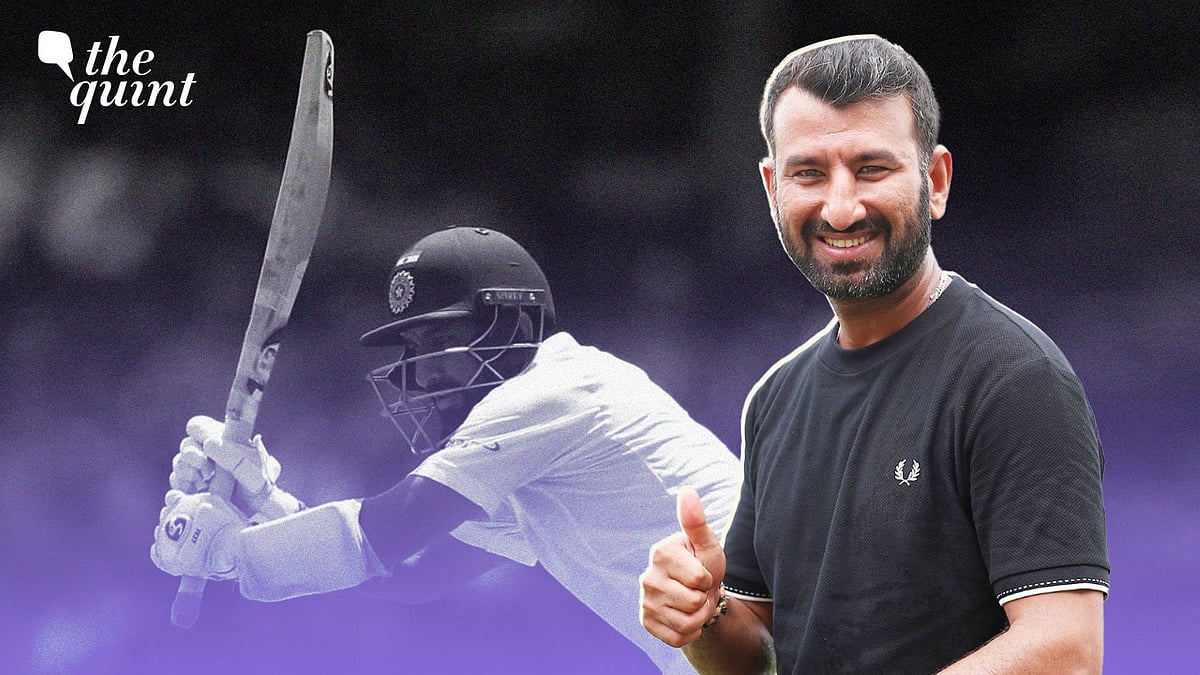Calm and Composed? No, Cheteshwar Pujara Is the Opposite. He Is an Anarchist.
You might think Cheteshwar Pujara is the embodiment of poise. Think again, because he is the biggest anarchist.

advertisement
Cheteshwar Pujara is an anarchist.
Was Pujara not the precise opposite? An anarchist thrives on chaos and lawlessness. Pujara, in contrast, is the embodiment of poise and tranquility. A man who could never defy law even if his life was dependent on it.
Why Pujara Is Not an Anarchist — Testament 1
He is a fan of Michael Hussey. But who is not? Mr Cricket enchanted a generation of millennials with the art of batting. Delicate on the eyes, mighty on the scorecards, Hussey was perfection incarnate.
But Pujara was not a fan of Hussey for that specific reason. The Australian had to toil and grind an entire decade in domestic cricket before wearing his baggy green. Pujara saw a reflection of him in Hussey.
Usually, when a 17-year-old accumulates runs with such consistency, the expectation is to earn the Indian cap in a year or two. It took Pujara five years.
Typically, a 17-year-old with such consistency would earn the Indian cap in a year or two. It took Pujara five. Yet, he never complained. If a batter as great as Michael Hussey could wait ten years, what harm lay in waiting five?
So, definitely not an anarchist.
Why Pujara Is Not an Anarchist — Testament 2
Eleven years after his Test debut, Pujara was signed by Chennai Super Kings for the IPL. Not because he fit their XI plans, but to honour his contributions to the Test team. Simply, to save him from the embarrassment of going unsold — a fate familiar since 2015, save for the one season he opted out.
We would never know, but Pujara was an exception — ironically, by not being an exception.
Entranced by the IPL since his Kolkata Knight Riders days, he had acknowledged the sting of exclusion, but never remonstrated. He understood that his style was ill-suited for the shortest format, and that was no reason to lose sleep. So, not an anarchist.
Pujara is, indeed, quite the opposite. Law-abiding, Deferential. Duteous.
Why Pujara is an Anarchist
Why declare Pujara an anarchist?
Pujara belonged to the latter clan. We do call it a clan, but you won’t really find many members. Wasim Jaffer, and those who believe Pujara is the ‘last of his kind’, have a point.
Sound technique and an impregnable temperament earned Pujara his maiden call-up, where he scored 72 as India defeated Australia in Bengaluru. That should have marked a steady ascent, but injury intervened. By the time he recovered, Virat Kohli had debuted, scored three fifties and a century, and the new crop were punching above their weight.
Pujara, though, earned his slot back after emerging as the leading run-scorer in India A’s series against West Indies A, and then on his first Test since his return, he struck a 159 aganst New Zealand
It could have earned him his maiden ODI cap, and probably, it should have. But it didn’t, and in justification, the erstwhile captain MS Dhoni opined that he could only pick 11.
Pujara continued to perform in Test cricket. He scored yet another double century against Australia, became — at the time — the second-fastest Indian to accumulate 1000 runs, and had cemented his place in the Test squad.
Until, there was another bout with injury.
This has been a recurring theme, and it Pujara some getting used to. 2014, in particular, saw him scoring a grand total of zero centuries, while his limited overs career also seemed to be over after managing merely 51 runs in five ODIs.
Having sat that match out, and a couple in Sri Lanka, Pujara found himself presented with a rare opportunity when Murali Vijay was injured ahead of the third Test. The series was tied at 1-1, and Pujara had to bat as an opener, as opposed to his preferred number three slot.
Doing so, he struck an unbeaten 145, as India won their first Test series in nearly two years.
Amid chaos, he stood still. And waited for his opportunity.
The Era That Was, and the End of It
You know about the rest of the journey.
About his 525-ball 202 against Australia in 2017, which, till date, is the longest inning by an Indian batter.
Or his 123 at Adelaide in 2018, and eventually, 521 runs across seven innings, which helped India claim a historic Border Gavaskar Trophy triumph. You also know that in the same series, he scored 193 in Sydney.
In the famous Sydney save, you have seen him cop innumerable blows to possibly every region of his body, as he scored a half-century.
You probably know that Pujara is among only eight Indians who have scored over 7,000 runs in Test cricket, and fourth on the list of the most first-class runs scored for India.
Do you also know that he has scored the most first-class runs in a single season by any Indian? Fair enough.
But all of that is known. Documented. Could be found with a click of a finger — now, and forever.
One would think that Pujara is anachronistic. Not belonging to this era.
But he did.
Except now, with his retirement, the era itself may be drawing the curtains.